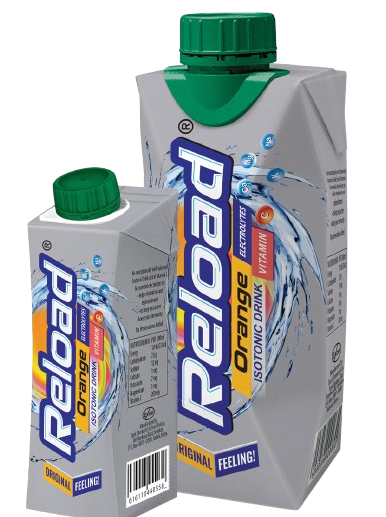Making Marketing Automation and AI Work for You
The Reality of AI in Today’s Marketing Landscape

As a communications professional, I’ve observed a fundamental truth: Technology’s true value lies in its accessibility and practical application. It may sound obvious, but in our human-driven global marketplace, technology only succeeds when it meets people where they are.
Two recent experiences in the Kenyan market perfectly illustrate this balance between innovation and practicality:

Case Study 1: Hii-Style’s Human Touch
Consider Ciiku, the entrepreneur behind Hii-Style. For international readers, Ciiku has mastered the Kenyan market through an elegantly simple approach. She’s built her brand by understanding three key elements: competitive pricing, strategic promotion, and TikTok engagement. In a challenging economy, she prices her products at one-third or one-fourth of market rates. Her formula? Video content, consistent posting, personal engagement, and sales.
Could AI enhance her business? Certainly, predictive modeling and recommendation engines could add value once her brand matures. But Ciiku’s success reminds us that fundamental business principles—like understanding your market and maintaining healthy cash flow—remain paramount.
Case Study 2: Reloads Tangible Impact
Excel Kenya’s isotonic drink Reload offers another instructive example. Despite limited brand recognition, their sponsorship strategy for the Standard Chartered Marathon proved brilliant in its simplicity. Rather than relying on complex digital strategies, they focused on direct engagement with marathoners. The result? Substantial orders and genuine market momentum. Sometimes, physical presence trumps digital sophistication.
The Marketing Technology Balance
As industry professionals, we’re walking a tightrope between technological complexity and market reality. While there’s growing skepticism around AI-generated content, particularly regarding voice and image rights, AI’s backend applications are revolutionizing organizational operations.
The key lies in finding the sweet spot: Where does AI truly add value, and where does human touch remain irreplaceable?
How can we then implement the complex into the simple market driven world?

In today’s hyper-competitive business world, leading organizations are embracing the transformative potential of artificial intelligence (AI) to revolutionize their marketing efforts. I will give The Kijiji Bank case study (created for purposes of this write up) to provide a powerful blueprint for implementing sophisticated, data-driven marketing strategies that can be adapted across diverse industries
Building the Foundation: Comprehensive Customer Profiling
The bedrock of effective marketing automation lies in creating a comprehensive 360-degree view of your customers. By consolidating data from a myriad of touchpoints – including your core banking system, mobile app, branch interactions, call center logs, and digital engagement – you can build detailed customer profiles that reveal invaluable insights.
python code
This code would be integrated into the backend or server-side components of your application,
where the data consolidation and analysis logic reside.
def create_customer_360_profile(customer_id):
return {
‘demographic_data’: get_demographic_info(customer_id),
‘transaction_history’: analyze_transaction_patterns(customer_id),
‘product_interactions’: track_product_usage(customer_id),
‘digital_engagement’: analyze_digital_interactions(customer_id)
}
Unleashing the Power of Predictive Recommendation Engines
One of the most transformative applications of AI in marketing is the development of intelligent recommendation systems. By leveraging machine learning algorithms, you can provide real-time, hyper-personalized product and service suggestions tailored to each customer’s unique profile.
These AI-powered recommendation engines don’t just cross-sell – they unlock new opportunities for customer delight, helping you anticipate and fulfill their evolving needs.
Staying Ahead of the Curve: Churn Prediction and Retention Strategies
In today’s competitive landscape, proactively identifying and mitigating customer churn is crucial for sustainable growth. By employing predictive models, you can accurately forecast churn risk and implement targeted retention strategies to keep your most valuable customers engaged and loyal.
python
This code would be integrated into the backend or server-side components of your application,
where the machine learning model inference and retention strategy generation happen.
def predict_customer_churn(customer_profile):
churn_probability = ml_model.predict(customer_profile)
return {
‘churn_risk’: churn_probability,
‘recommended_retention_strategies’: generate_retention_strategies(churn_probability)
}
“`
Unleashing the Power of Predictive Recommendation Engines
One of the most transformative applications of AI in marketing is the development of intelligent recommendation systems. By leveraging machine learning algorithms, you can provide real-time, hyper-personalized product and service suggestions tailored to each customer’s unique profile.
These AI-powered recommendation engines don’t just cross-sell – they unlock new opportunities for customer delight, helping you anticipate and fulfill their evolving needs.
Staying Ahead of the Curve: Churn Prediction and Retention Strategies
In today’s competitive landscape, proactively identifying and mitigating customer churn is crucial for sustainable growth. By employing predictive models, you can accurately forecast churn risk and implement targeted retention strategies to keep your most valuable customers engaged and loyal.
“`python
# This code would be integrated into the backend or server-side components of your application,
# where the machine learning model inference and retention strategy generation happen.
def predict_customer_churn(customer_profile):
churn_probability = ml_model.predict(customer_profile)
return {
‘churn_risk’: churn_probability,
‘recommended_retention_strategies’: generate_retention_strategies(churn_probability)
}
“`
Seamless Omnichannel Integration
Successful marketing automation requires a holistic, omnichannel approach. By seamlessly integrating your AI-powered solutions across various customer touchpoints – from mobile apps and web platforms to email campaigns, SMS notifications, in-branch digital displays, and intelligent call center routing – you can create a unified, frictionless experience that delights your customers at every turn.
Prioritizing Ethical AI Principles
As you harness the power of AI in your marketing efforts, it’s crucial to uphold the highest ethical standards. This includes ensuring transparent decision-making, robust data privacy mechanisms, bias detection in recommendation algorithms, clear opt-out options, and strict regulatory compliance.
Measuring Success: Key Performance Indicators
To evaluate the true impact of your marketing automation initiatives, focus on tracking critical metrics such as:
Customer Acquisition Cost: Target a 30% reduction in marketing spend per new customer acquisition.
Cross-Selling Success Rate: Aim for a 25% increase in product adoption per customer.
Customer Retention: Strive for a 10% reduction in your churn rate.
Digital Engagement: Work towards a 40% increase in mobile and online banking interactions.
Tailoring for Industry-Specific Needs
While the core principles of marketing automation remain universal, the specific applications can be customized to address the unique requirements of different industries:
Retail
Personalized product recommendations
Dynamic pricing strategies
Inventory management predictions
Financial Services
Credit risk assessment
Fraud detection
Personalized financial advice
Healthcare
Patient engagement tracking
Personalized treatment recommendations
Appointment scheduling optimization
Telecommunications
Personalized service packages
Churn prediction
Network usage optimization
Conclusion: Embracing the Future of Marketing
What lies ahead, you ask?
The answer is in mastering simplicity amidst complexity.
Take, for instance, Ciiku from the Hii Style brand. She could work wonders by tapping into predictive models, forecasting what the market will crave over the next five or six months. This approach could prevent the dreaded overstocking and, heaven forbid, sidestep bringing in items that nobody wants. It’s a “look-before-you-leap” strategy, only with spreadsheets instead of cliffs.
Then there’s Reload. To stand out, they could integrate marketing automation with a dash of creativity. Imagine vending machines that aren’t just spitting out soda but offering customers gentle nudges toward buying choices or, better yet, tokenizing parts of their supply chain to make every link smarter. Of course, all this depends on the company’s ultimate goals. “To automate or not to automate,” as Shakespeare would say… if he were selling soda, that is.
But let’s not kid ourselves: successful marketing automation isn’t a tech-only affair. It’s about weaving together a clear vision, building robust technology foundations, and, perhaps most importantly, staying obsessively focused on the customer. By harnessing AI, companies can elevate customer relationships beyond the transactional. It’s about creating interactions that are so personal, the customers might just feel like the brand’s sending them love notes. And with these bonds? Only growth that sticks—sustainably.
There’s been talk that AI adoption tools for articles tend to be too abstract and could benefit from a more hands-on approach.
With that in mind, here’s a section especially for Aunty Betty on how Kijiji Bank could get started with AI:
Which Tools to Use in Marketing Automation
Here’s a look at some of the top AI marketing tools by category, including options from around the world:
Recommendation Engines
Tensor Flow Recommenders:
An open-source library that lets you build recommender system models. It’s highly customizable and works seamlessly with the TensorFlow ecosystem.Amazon Personalize:
A fully managed machine learning service providing real-time, personalized recommendations across various types. Perfect for targeted customer engagement.
Predictive Analytics Platforms
DataRobot:
This platform automates machine learning, making it easy to create AI models without coding. It’s ideal for businesses that need robust predictive analytics.H2O.ai:
An open-source machine learning platform that supports multiple programming languages. It offers powerful predictive modeling tools for advanced analysis.Adverity (Austria):
A data intelligence platform focused on marketing analytics and data integration. It helps marketers track performance across multiple channels and gain real-time insights.
Conversational AI Tools
Dialogflow (Google):
Uses natural language processing (NLP) with support for multiple languages and integrates easily across platforms, making it a versatile choice.IBM Watson Assistant:
An enterprise-level conversational AI tool with sophisticated language understanding. It can be tailored to suit industry-specific needs.FinChatBot
A conversational AI tool focused on customer service chatbots, particularly for financial services. It helps companies automate interactions with customers using natural language understanding adapted to African markets.
Visual AI and Image Recognition
Cortexica
Specializes in visual AI for retail, including image recognition, visual search, and intelligent analytics. Ideal for brands looking to enhance visual engagement with customers.SenseTime
Known for advanced computer vision, SenseTime’s tools support facial recognition, video analysis, and augmented reality, especially for retail and entertainment.
Cross-Device and Multi-Channel Marketing
Appier
This tool uses AI for cross-screen marketing, predictive targeting, and customer behavior analysis. It helps brands engage with audiences seamlessly across devices.Zoho Zia
An AI-powered assistant within the Zoho CRM platform that provides predictions, suggestions, and automation based on customer data. It’s widely used across Asia for CRM-driven marketing automation.
Market-Specific Predictive and Investment Analysis
DataProphet
Primarily known for AI in manufacturing, DataProphet also offers predictive analytics and intelligent automation that can support marketing operations, especially for B2B industries.Daba
A Nigerian investment tech platform that uses AI to analyze market data and trends, supporting strategic marketing decisions tailored for African markets.
Are there even more tools out there? Definitely! Keep exploring and reading up on what’s new to stay ahead.
Get the Lastest in Communication- Media and the Latest tools
Categorized in:
Subscribe to our email newsletter to get the latest posts delivered right to your email.

Packachange Great information shared.. really enjoyed reading this post thank you author for sharing this post .. appreciated
Most welcome,keep reading and subscribing